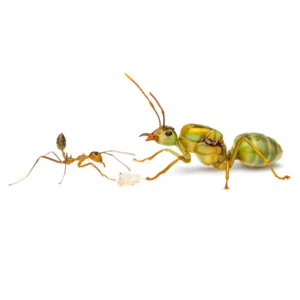Characteristics of Manica rubida
The Manica rubida is mostly a European species. It is native to central and southern Europe. A medium-sized, spectacular species that is moderately easy to keep. It is stinging, so it can sting, but it is not dangerous to humans, it is dangerous to insect prey.
Their nuptial flight generally take place from May to September. It is also native to Hungary, but it is quite rare, living above 500m (measured from sea level). They can almost only be collected from the wild when swarming. They like sandy areas, so it is safe to sprinkle in the formicarium as decoration.
It is a moderately fast-growing species, an adult queen can reach up to 1000+ workers. Primarily it is a monogynous species, so you can keep one queen in a test tube/formicarium. However, a mature colony can be polygynous. During their development, cocoon does not appear. From puppy to adult worker, about 8-12 weeks are needed. The Queen could live up to 15 years.
Manica rubida is a hibernating species. Hibernation is recommended from the end of October to the end of March. During this period, the right temperature is 5-8 degrees Celsius. Hibernation can be done in a test tube or a formicarium, depending on the number of workers. Keep them in a dark place and do not disturb them by moving them.
In terms of feeding, they like small insects and worms, but in larger colonies they can also get live insects, and they can easily bite them. It is essential that they are fed only sterile food, as insects caught outside may carry pathogens at higher rates, which could lead to the death of the colony. Honey and sugary water are also suitable for them. Water supplies should always be available for them.
Attention!
Its sting is painful, so it is forbidden to touch it. For experienced researchers only. We are not liable for any injury, accident or damage caused by the species. The buyer accepts this and buys with this in mind. The displayed product image is protected by copyright, and its use requires permission. The picture is an illustration.
- You can find useful videos about them on our TikTok channel.






Reviews
There are no reviews yet.